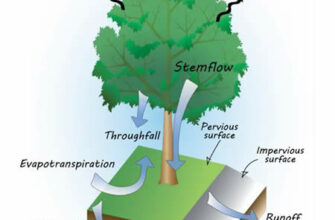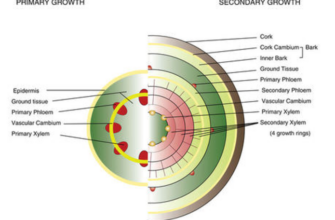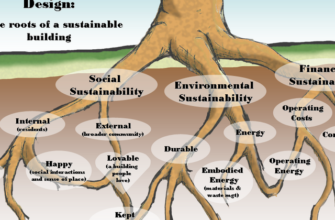
- Trees: The Key to Solving Biodiversity Challenges on Biodiversity Day 2023
- Why Biodiversity Day is important
- The role of trees in preserving biodiversity
- The impact of deforestation on biodiversity
- How trees contribute to climate change mitigation
- The connection between trees and wildlife habitats
- The economic benefits of preserving biodiversity
- Tree planting initiatives around the world
- How individuals can contribute to biodiversity conservation
- The importance of education in biodiversity preservation
- Government policies and biodiversity conservation
- Corporate responsibility in preserving biodiversity
- The role of indigenous communities in biodiversity conservation
- Technological advancements in biodiversity research
- The challenges of biodiversity conservation
- The future of biodiversity and the role of trees
Trees: The Key to Solving Biodiversity Challenges on Biodiversity Day 2023
Biodiversity Day 2023 is an occasion to celebrate the incredible variety of life on our planet and to raise awareness about the importance of preserving it. One crucial element of biodiversity is trees, which play a vital role in maintaining the balance of ecosystems and providing numerous benefits to both humans and wildlife.
Trees are not only a source of oxygen, but they also act as natural air filters, removing pollutants and improving air quality. They provide habitat for countless species, from birds and insects to mammals and reptiles, contributing to the overall biodiversity of an area. Additionally, trees help prevent soil erosion, regulate water cycles, and mitigate the effects of climate change by absorbing carbon dioxide.
In 2023, it is more important than ever to recognize the value of trees as part of the solution to the biodiversity crisis. Deforestation and habitat loss are major threats to biodiversity, and without urgent action, many species could face extinction. By planting and protecting trees, we can help restore and preserve ecosystems, providing a lifeline for endangered species and ensuring a sustainable future for our planet.
On Biodiversity Day 2023, let us come together to celebrate the beauty and importance of trees. Whether it is through planting trees in our communities, supporting reforestation efforts, or advocating for stronger environmental policies, we all have a part to play in protecting and restoring biodiversity. Trees are not only part of the solution, but they are also a symbol of hope for a greener and more sustainable world.
Why Biodiversity Day is important
Biodiversity Day is an important day dedicated to raising awareness about the importance of biodiversity and the need to protect and conserve it. Biodiversity refers to the variety of life on Earth, including all the different species of plants, animals, and microorganisms. It is essential for the functioning of ecosystems and provides us with valuable resources and services.
On Biodiversity Day, we recognize that biodiversity is not only important for its intrinsic value, but also because it is part of the solution to many of the challenges we face today. Trees, in particular, play a crucial role in maintaining biodiversity. They provide habitat for countless species, support the food web, and contribute to the overall health of ecosystems.
By protecting and planting trees, we can help mitigate climate change by sequestering carbon dioxide and reducing greenhouse gas emissions. Trees also help to regulate temperature, prevent soil erosion, and improve air and water quality. They are an integral part of sustainable development and can contribute to the achievement of the United Nations’ Sustainable Development Goals.
Furthermore, Biodiversity Day serves as a reminder that we are all interconnected and dependent on the natural world. The loss of biodiversity not only threatens the survival of many species, but also has negative consequences for human well-being. It can lead to the loss of ecosystem services, such as pollination and natural pest control, and can disrupt the balance of ecosystems.
By celebrating Biodiversity Day and taking action to protect and conserve biodiversity, we can ensure a sustainable future for ourselves and future generations. It is a day to reflect on our relationship with nature and to recognize the importance of preserving the incredible diversity of life on Earth.
The role of trees in preserving biodiversity
Trees play a crucial role in preserving biodiversity. They provide habitat for a wide variety of plant and animal species, creating a rich and diverse ecosystem. This is especially important in the face of increasing threats to biodiversity, such as habitat loss and climate change.
Day by day, trees are becoming an integral part of efforts to protect and restore biodiversity. They act as natural carbon sinks, absorbing and storing carbon dioxide from the atmosphere. This helps mitigate climate change and its impacts on biodiversity. Trees also help regulate local climates, providing shade, reducing temperatures, and preventing soil erosion.
Biodiversity Day 2023 aims to raise awareness about the importance of trees in preserving biodiversity. Trees not only provide habitat and food for countless species, but they also contribute to the overall health of ecosystems. They improve air and water quality, support nutrient cycling, and enhance soil fertility. By planting and protecting trees, we can help maintain and restore biodiversity.
Furthermore, trees are essential for the survival of many threatened and endangered species. They provide nesting sites, food sources, and shelter for animals, birds, and insects. By conserving and expanding forested areas, we can create safe havens for these species and ensure their long-term survival.
In conclusion, trees are an integral part of the solution to preserving biodiversity. They provide habitat, regulate climate, improve ecosystem health, and support threatened species. Biodiversity Day 2023 serves as a reminder of the importance of trees and encourages individuals and communities to take action to protect and restore biodiversity through tree planting and conservation efforts.
The impact of deforestation on biodiversity
Deforestation, the widespread clearing of forests, has a significant impact on biodiversity. Trees, as an integral part of ecosystems, play a crucial role in maintaining the delicate balance of nature. However, the relentless destruction of forests poses a grave threat to the diverse array of species that rely on these habitats for their survival.
One of the main consequences of deforestation is the loss of habitat for countless plant and animal species. Trees provide shelter, food, and breeding grounds for a wide range of organisms. When forests are destroyed, these species are forced to either adapt to new environments or face extinction. The destruction of their homes disrupts the intricate web of life, leading to a decline in biodiversity.
Furthermore, deforestation contributes to climate change, which in turn exacerbates the loss of biodiversity. Trees are essential for regulating the Earth’s climate by absorbing carbon dioxide and releasing oxygen through photosynthesis. The removal of trees releases large amounts of carbon dioxide into the atmosphere, a greenhouse gas that traps heat and contributes to global warming. As temperatures rise, many species are unable to adapt quickly enough, leading to further declines in biodiversity.
Deforestation also has severe implications for local communities and indigenous peoples who depend on forests for their livelihoods. Forests provide a source of food, medicine, and resources for these communities, and their destruction can result in the loss of cultural traditions and knowledge passed down through generations.
In conclusion, deforestation has a devastating impact on biodiversity. Trees are a vital part of the solution to preserve and restore the delicate balance of ecosystems. As we approach Biodiversity Day in 2023, it is crucial to recognize the importance of trees and take action to protect and restore forests for the benefit of all species and the planet as a whole.
How trees contribute to climate change mitigation
Trees play a crucial role in mitigating climate change by absorbing carbon dioxide from the atmosphere through the process of photosynthesis. They act as natural carbon sinks, storing carbon in their trunks, branches, leaves, and roots. This helps to reduce the concentration of greenhouse gases in the atmosphere, which is vital for combating global warming and its adverse effects on biodiversity.
In addition to carbon sequestration, trees also help to regulate the climate by releasing moisture into the atmosphere through a process called transpiration. This moisture contributes to the formation of clouds and rainfall, which helps to cool the Earth’s surface and maintain a balanced climate. By creating a more favorable climate, trees support the survival and growth of diverse plant and animal species, thus promoting biodiversity.
The shade provided by trees helps to reduce the heat island effect in urban areas, where concrete and asphalt absorb and radiate heat, leading to higher temperatures. By providing shade, trees help to lower the air temperature, reduce energy consumption for cooling, and improve the overall comfort and well-being of urban residents. This is particularly important in the context of climate change, as rising temperatures pose significant health risks.
Furthermore, trees play a crucial role in preventing soil erosion and maintaining water quality. Their roots help to stabilize the soil, preventing erosion caused by wind and water. This is especially important in areas prone to flooding or landslides. Additionally, trees filter and purify water by absorbing pollutants and excess nutrients, thus improving water quality in rivers, lakes, and streams.
In conclusion, trees are an integral part of the solution to climate change and biodiversity loss. Their ability to absorb carbon dioxide, regulate the climate, provide shade, prevent soil erosion, and improve water quality makes them invaluable in mitigating the impacts of climate change and supporting biodiversity. It is essential to recognize and protect the importance of trees in order to ensure a sustainable and resilient future for our planet.
The connection between trees and wildlife habitats
Trees play a crucial role in providing habitats for various wildlife species. They are an essential part of the solution to the biodiversity crisis we face in 2023. Trees provide food, shelter, and nesting sites for a wide range of animals, from birds and mammals to insects and reptiles.
One of the main reasons trees are important for wildlife habitats is their ability to provide food. Many animals rely on the fruits, nuts, and seeds produced by trees as a source of nutrition. Birds, for example, feed on the berries and insects found in trees, while squirrels and other mammals depend on the acorns and other nuts that trees provide.
Trees also offer shelter and nesting sites for wildlife. The dense foliage and branches of trees create a safe haven for birds and small mammals, protecting them from predators and harsh weather conditions. Tree cavities and hollows provide ideal nesting spots for birds, while dead trees, known as snags, serve as homes for various insects and fungi.
In addition to providing food and shelter, trees contribute to the overall health and diversity of ecosystems. They help regulate temperatures, retain moisture, and improve soil quality, creating favorable conditions for a variety of plant and animal species to thrive. Furthermore, trees act as natural carbon sinks, absorbing carbon dioxide from the atmosphere and mitigating the effects of climate change.
To protect and enhance wildlife habitats, it is crucial to conserve and plant trees. Afforestation and reforestation efforts can help restore degraded ecosystems and create new habitats for wildlife. By recognizing the vital role of trees in supporting biodiversity, we can work towards a sustainable future for both wildlife and humans.
The economic benefits of preserving biodiversity
Preserving biodiversity has significant economic benefits that extend far beyond the environmental value. By protecting and conserving diverse ecosystems and species, we can ensure a sustainable future for generations to come.
One of the key economic benefits of preserving biodiversity is the provision of ecosystem services. Ecosystem services, such as pollination, water filtration, and carbon sequestration, are essential for human well-being and have a direct impact on various industries. For example, pollinators play a crucial role in agriculture, contributing to crop production and ensuring food security. Without biodiversity, these ecosystem services would decline, leading to increased costs and potential economic losses.
Preserving biodiversity also offers opportunities for ecotourism and sustainable business practices. Natural habitats, such as forests, wetlands, and coral reefs, attract tourists from around the world, generating revenue for local communities. Moreover, sustainable businesses that rely on natural resources, such as timber, medicinal plants, and fisheries, can thrive when biodiversity is conserved. By promoting responsible and sustainable practices, these industries can contribute to economic growth while preserving the natural environment.
Investing in the preservation of biodiversity can also lead to job creation and economic development. The conservation and restoration of ecosystems require skilled professionals, ranging from scientists and ecologists to park rangers and environmental educators. These jobs not only provide employment opportunities but also contribute to local economies and promote sustainable development.
In conclusion, preserving biodiversity is not only essential for the environment but also offers significant economic benefits. By protecting diverse ecosystems and species, we can ensure the provision of ecosystem services, support sustainable businesses, promote ecotourism, and create employment opportunities. As we celebrate Biodiversity Day in 2023, let us recognize that trees are part of the solution and play a vital role in preserving biodiversity and fostering economic prosperity.
Tree planting initiatives around the world
Tree planting initiatives have become an integral part of global efforts to address the environmental challenges we face today. In 2023, on Biodiversity Day, organizations and individuals around the world are coming together to highlight the importance of trees as part of the solution.
One notable initiative is the “Million Trees Project” in China. This ambitious undertaking aims to plant one million trees across the country by 2023. The project not only helps combat deforestation and desertification but also promotes biodiversity and improves air quality.
In Australia, the “Great Green Wall” initiative is gaining momentum. This project aims to create a continuous line of trees and vegetation across the country’s arid regions, helping to combat soil erosion, preserve water resources, and provide habitats for native species.
In Brazil, the “Amazon Rainforest Reforestation” initiative focuses on restoring the world’s largest tropical rainforest. With the goal of planting millions of trees by 2023, this initiative aims to combat deforestation, protect endangered species, and mitigate climate change.

Another noteworthy initiative is the “Green Belt Movement” in Kenya. Founded by Nobel Laureate Wangari Maathai, this movement has been planting trees since 1977 to address deforestation and promote sustainable development. Their efforts have not only restored degraded lands but also empowered local communities.
These are just a few examples of the many tree planting initiatives taking place around the world. By recognizing the role of trees in biodiversity conservation and climate change mitigation, we can work towards a more sustainable future for ourselves and future generations.
How individuals can contribute to biodiversity conservation
1. Planting trees: One of the most effective ways individuals can contribute to biodiversity conservation is by planting trees. Trees are a crucial part of the solution to preserving biodiversity. By planting trees, individuals can help create and restore habitats for various species, provide food and shelter, and contribute to carbon sequestration.
2. Supporting local biodiversity initiatives: Individuals can also contribute to biodiversity conservation by supporting local initiatives that focus on protecting and preserving biodiversity. This can include volunteering for local conservation organizations, participating in community-based restoration projects, or donating to biodiversity conservation funds.
3. Reducing the use of pesticides and chemicals: Another way individuals can contribute to biodiversity conservation is by reducing the use of pesticides and chemicals in their everyday lives. These substances can have harmful effects on both plants and animals, leading to a decline in biodiversity. By opting for organic and natural alternatives, individuals can minimize their impact on the environment and help protect biodiversity.
4. Creating wildlife-friendly gardens: Individuals can also contribute to biodiversity conservation by creating wildlife-friendly gardens. This can involve planting native plants, providing water sources, and creating habitats such as birdhouses and bee hotels. These gardens can attract and support a wide range of species, contributing to the overall biodiversity of the area.
5. Educating others: Lastly, individuals can contribute to biodiversity conservation by educating others about the importance of biodiversity and the actions they can take to protect it. This can involve sharing information through social media, organizing educational events or workshops, or simply having conversations with friends, family, and colleagues. By raising awareness and inspiring others to take action, individuals can have a significant impact on biodiversity conservation.
The importance of education in biodiversity preservation
Trees play a crucial role in maintaining biodiversity and are an integral part of the solution to the environmental challenges we face in 2023. However, their preservation and conservation require a collective effort, and education plays a vital role in raising awareness about the importance of trees in sustaining our ecosystems.
Education about biodiversity and the role of trees in it helps individuals understand the interconnectedness of all living organisms and their dependence on each other. Through education, people can learn about the various functions and benefits provided by trees, such as carbon sequestration, oxygen production, and habitat creation.
Education empowers individuals to make informed choices and take actions that contribute to the preservation of biodiversity. It helps them understand the consequences of deforestation and the importance of sustainable practices, such as reforestation and afforestation.
Furthermore, education plays a crucial role in fostering a sense of responsibility and stewardship towards the environment. By teaching people about the value of trees and the threats they face, education encourages individuals to become active participants in conservation efforts. This can include activities like participating in tree planting initiatives, supporting organizations that protect forests, and advocating for policies that promote sustainable land use.
Education also helps in dispelling misconceptions and myths surrounding trees and their role in biodiversity preservation. By providing accurate information, education can counter misinformation and promote a better understanding of the benefits of trees and the need to protect them.
In conclusion, education plays a crucial role in biodiversity preservation, particularly in raising awareness about the importance of trees. By equipping individuals with knowledge and understanding, education empowers them to make informed decisions and take actions that contribute to the conservation and sustainability of our ecosystems.
Government policies and biodiversity conservation
Government policies play a crucial part in the conservation of biodiversity. With the Biodiversity Day in 2023 focusing on the theme “Trees are part of the solution”, it is essential for governments to implement policies that prioritize the protection and preservation of trees and their ecosystems.
One effective policy approach is the establishment of protected areas and national parks. These areas serve as havens for diverse tree species and provide a safe habitat for numerous plant and animal species. Governments can allocate funds for the management and maintenance of these protected areas, ensuring their long-term sustainability.
In addition to protected areas, governments can also promote sustainable forestry practices. This includes implementing regulations to prevent illegal logging and deforestation, as well as encouraging reforestation efforts. By promoting sustainable forestry, governments can ensure the continued growth and survival of tree populations, which are vital for maintaining biodiversity.
Furthermore, governments can incentivize private landowners to participate in tree conservation efforts. This can be done through tax breaks or financial incentives for landowners who protect and preserve trees on their properties. By involving private landowners, governments can expand the reach of biodiversity conservation initiatives and create a more comprehensive approach to tree protection.
Lastly, governments can educate and raise awareness among the general public about the importance of trees and biodiversity. This can be done through public campaigns, educational programs, and community engagement initiatives. By increasing public knowledge and understanding, governments can foster a sense of responsibility and encourage individuals to take part in tree conservation efforts.
In conclusion, government policies play a vital role in biodiversity conservation, especially when it comes to the protection and preservation of trees. By establishing protected areas, promoting sustainable forestry practices, incentivizing private landowners, and raising public awareness, governments can contribute to the solution and ensure the long-term survival of trees and the biodiversity they support.
Corporate responsibility in preserving biodiversity
As we approach Biodiversity Day in 2023, it is crucial for corporations to recognize their part in preserving biodiversity. Biodiversity refers to the variety of life on Earth, including the different species of plants, animals, and microorganisms. It is essential for the health and stability of ecosystems, and trees play a significant role in maintaining this delicate balance.
Corporations have a responsibility to contribute to the solution by implementing sustainable practices that support biodiversity. One way they can do this is by prioritizing the protection and restoration of forests. Trees not only provide habitat for countless species but also help regulate climate by absorbing carbon dioxide and releasing oxygen.
Another aspect of corporate responsibility in preserving biodiversity is reducing the use of harmful chemicals and promoting environmentally friendly alternatives. Pesticides and other chemical pollutants can have devastating effects on biodiversity, including the decline of pollinators like bees. By opting for organic and sustainable farming practices, corporations can minimize their impact on biodiversity.
Furthermore, corporations can support biodiversity conservation efforts by partnering with organizations and initiatives dedicated to protecting ecosystems and endangered species. This can involve financial contributions, volunteering, or even creating partnerships for research and development of sustainable solutions.
In conclusion, corporate responsibility in preserving biodiversity is crucial for the health of our planet. By recognizing the importance of trees and their role in maintaining biodiversity, implementing sustainable practices, reducing the use of harmful chemicals, and supporting conservation efforts, corporations can contribute to the solution and help create a more sustainable future.
The role of indigenous communities in biodiversity conservation
Indigenous communities play a crucial role in the conservation of biodiversity. Their traditional knowledge and practices have been passed down through generations, allowing them to develop sustainable methods of managing and protecting the environment.
One of the key contributions of indigenous communities is their deep understanding of the interconnectedness between trees and biodiversity. They recognize the importance of trees in providing habitat for a wide range of species, as well as their role in regulating the climate and maintaining ecosystem balance.
Indigenous communities have a strong cultural and spiritual connection to trees, viewing them as sacred and essential for their way of life. This reverence for trees motivates them to actively participate in reforestation efforts and the preservation of forest ecosystems.
Furthermore, indigenous communities often have traditional systems of governance that prioritize the sustainable use of natural resources. They have developed effective strategies for managing forests, such as rotational farming and controlled harvesting, which help maintain biodiversity and prevent overexploitation.
By recognizing and supporting the role of indigenous communities in biodiversity conservation, we can harness their valuable knowledge and practices to address the challenges we face in the day to day management of our natural resources. Together, we can work towards a sustainable solution that preserves biodiversity for future generations.
Technological advancements in biodiversity research
The study of biodiversity is crucial for understanding the intricate web of life on our planet. Technological advancements have played a vital part in enhancing our knowledge and finding solutions to preserve biodiversity.
One of the key technological advancements is the use of remote sensing. Satellites equipped with sensors can capture images of vast areas, allowing scientists to monitor changes in land use and vegetation cover. This helps in assessing the impact of human activities on biodiversity and identifying areas that require conservation efforts.
Another important advancement is the use of DNA barcoding. This technique involves analyzing a short section of an organism’s DNA to identify its species. It has revolutionized the field of taxonomy, making species identification faster and more accurate. DNA barcoding has been particularly useful in identifying species in complex ecosystems like rainforests, where traditional methods may not be feasible.
Bioacoustics is another area where technology has made significant contributions to biodiversity research. By recording and analyzing the sounds produced by animals, scientists can study their behavior, monitor populations, and even detect the presence of rare or endangered species. This information is crucial for conservation efforts and understanding the role of different species in maintaining ecosystem balance.
Advancements in data collection and analysis have also made it easier to study the distribution and abundance of species. Citizen science projects and platforms allow individuals to contribute data on species sightings, helping scientists gather large amounts of information over a wide geographic area. This data can then be used to assess the health of ecosystems and identify areas that need protection.
In conclusion, technological advancements have become an integral part of biodiversity research. They have provided scientists with powerful tools to understand and conserve the rich diversity of life on our planet. On Biodiversity Day 2023, it is important to recognize the role of technology, along with trees and other natural solutions, in preserving our planet’s biodiversity.
The challenges of biodiversity conservation
Biodiversity is the variety of life on Earth, including the different species of plants, animals, and microorganisms. It is essential for the functioning of ecosystems and provides numerous benefits to human society. However, biodiversity is currently facing numerous challenges that threaten its existence.
One of the main challenges is habitat loss and fragmentation. Human activities such as deforestation, urbanization, and agricultural expansion have resulted in the destruction and degradation of natural habitats. This has led to the loss of many species and the disruption of ecological processes.
Another challenge is the spread of invasive species. These are non-native species that are introduced into new areas, where they can outcompete native species and disrupt local ecosystems. Invasive species can have devastating effects on biodiversity, as they can cause the extinction of native species and alter ecosystem dynamics.
Climate change is also a major threat to biodiversity. Rising temperatures, changing precipitation patterns, and extreme weather events can disrupt ecosystems and lead to the loss of species. Many species have specific habitat requirements and may not be able to adapt to rapid changes in their environment.
Finally, overexploitation of natural resources is a significant challenge for biodiversity conservation. Unsustainable hunting, fishing, and logging practices can deplete populations of species and disrupt ecological balance. This can have cascading effects on entire ecosystems and lead to the loss of biodiversity.
Addressing these challenges requires a multi-faceted approach. It involves the protection and restoration of natural habitats, the control of invasive species, the mitigation of climate change, and the promotion of sustainable resource use. Biodiversity conservation is not just a responsibility of governments and conservation organizations, but also requires the involvement of individuals, communities, and businesses. By working together, we can find solutions to preserve and protect biodiversity for future generations.
The future of biodiversity and the role of trees
As we celebrate Biodiversity Day in 2023, it is important to recognize the vital role that trees play in preserving and enhancing biodiversity. Trees are not just a beautiful part of our natural surroundings, but they also provide habitat for countless species of plants and animals. They serve as a crucial link in the intricate web of life that exists on our planet.
Trees are not only important for biodiversity, but they also play a crucial role in mitigating climate change. Through the process of photosynthesis, trees absorb carbon dioxide from the atmosphere and release oxygen. This helps to regulate the Earth’s climate and reduce the impact of greenhouse gases. In addition, trees act as natural filters, trapping pollutants and purifying the air we breathe.
In urban areas, trees provide a multitude of benefits. They help to cool the environment, reducing the need for energy-intensive air conditioning. They also help to reduce noise pollution and provide a sense of tranquility in bustling cities. Trees in urban areas also contribute to the overall well-being of residents, providing opportunities for recreation and relaxation.
However, the future of biodiversity and the role of trees is not without challenges. Deforestation, urbanization, and climate change pose significant threats to trees and the biodiversity they support. It is crucial that we take action to protect and preserve our forests and plant new trees to ensure a sustainable future for biodiversity.
On Biodiversity Day 2023, let us recognize the importance of trees in preserving biodiversity and take ac







